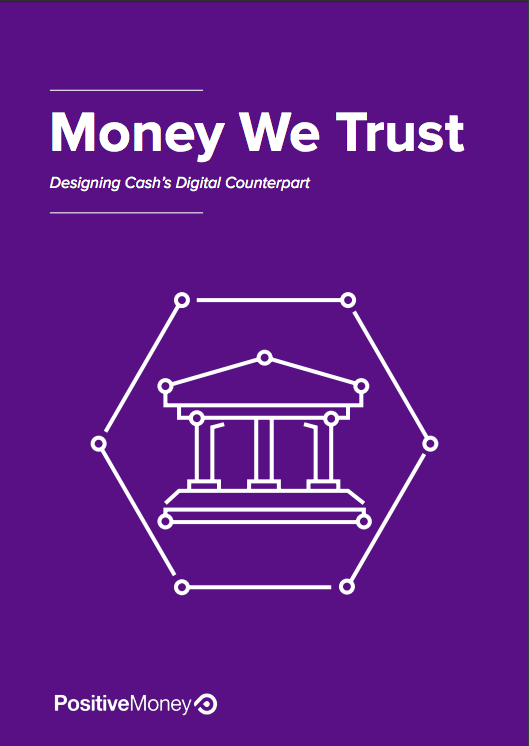Published April 2020
 The fragility of the financial system, combined with technological innovation and the decline in cash use, is transforming the conversation around the future of money. Central banks and governments are starting to rethink the role they have in managing a country’s currency.
The fragility of the financial system, combined with technological innovation and the decline in cash use, is transforming the conversation around the future of money. Central banks and governments are starting to rethink the role they have in managing a country’s currency.
Our public institutions must protect people’s trust in the monetary system by ensuring access to a public means of payment, which is especially important in times of crisis. A Central Bank Digital Currency (CBDC) offers a way to maintain this trust by averting the privatisation of money.
PDF Download:
Download full report here (Free, PDF, 47 pages)
By introducing a digital counterpart to cash, central banks can protect two essential functions of money – as a medium of exchange and store of value – from commercial banks’ reckless pursuit of profit.
The central barrier to implementing a CBDC is designing it so that it does not provoke bank runs or disintermediate the banking sector, and in doing so cause financial instability.
In this paper we explore design features of a CBDC that would minimise disruption to the current system, whilst ensuring it constitutes a versatile tool which can be used to pursue socioeconomic objectives that are compatible with the existing monetary policy objectives of central banks. As well as ensuring a public means of payment, introducing a CBDC could increase financial inclusion, increase financial stability, and support the implementation of unconventional monetary policies such as helicopter money.
This report assesses both the benefits of Central Bank Digital Currencies (CBDC’s) and the main implementation risks, and explores how such risks might be mitigated by enabling more precise central bank control over the CBDC’s impact on the financial system. It is paramount that this new monetary instrument is versatile and highly controllable if the private banking sector is not to face the risk of bank runs and unwarranted disintermediation of its current functions. The CBDC design specified in this report would achieve the required degree of controllability.
This paper is the first of two parts. In a follow-up paper we will explore the more radical monetary actions CBDC could enable, in response to the intersecting challenges facing economies and democracies.